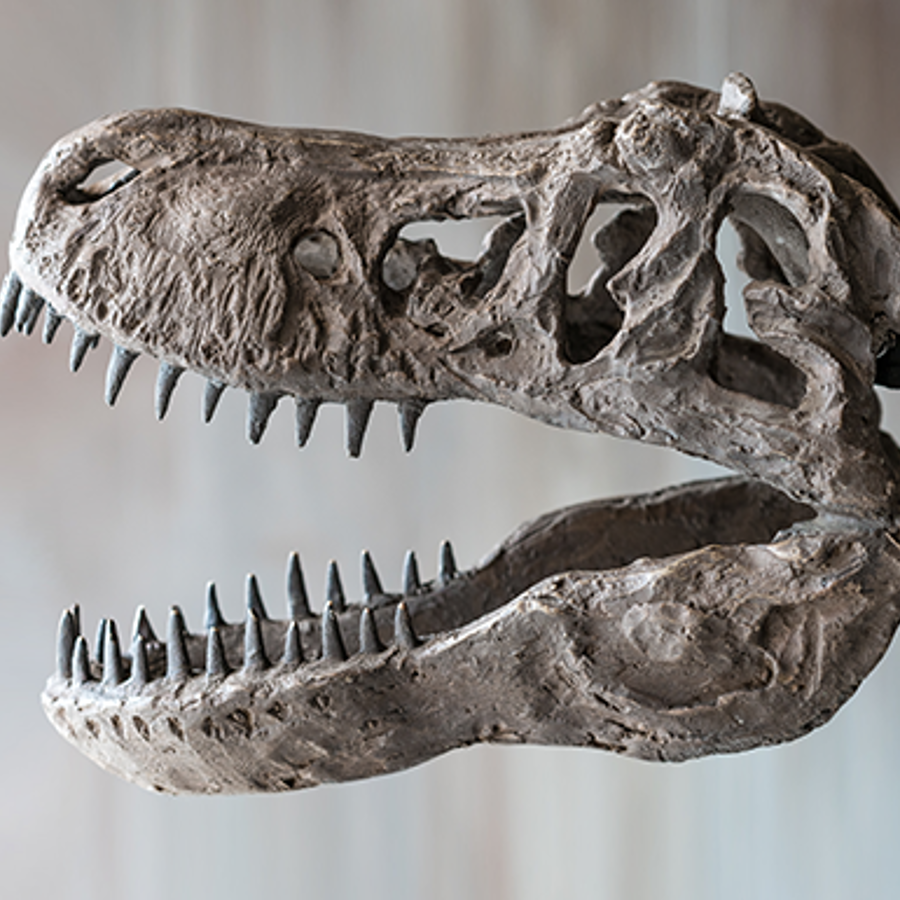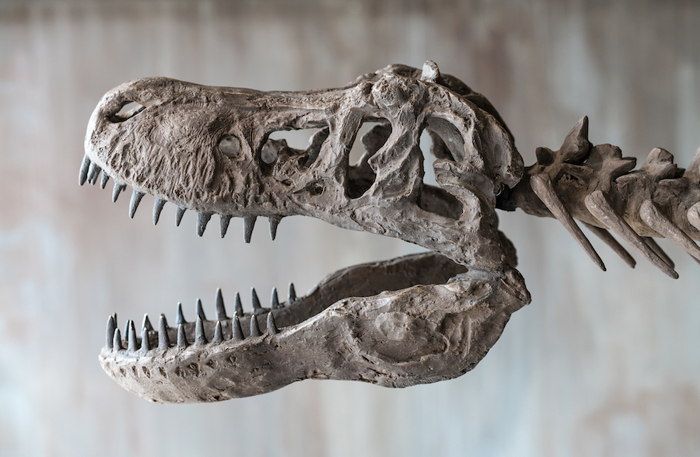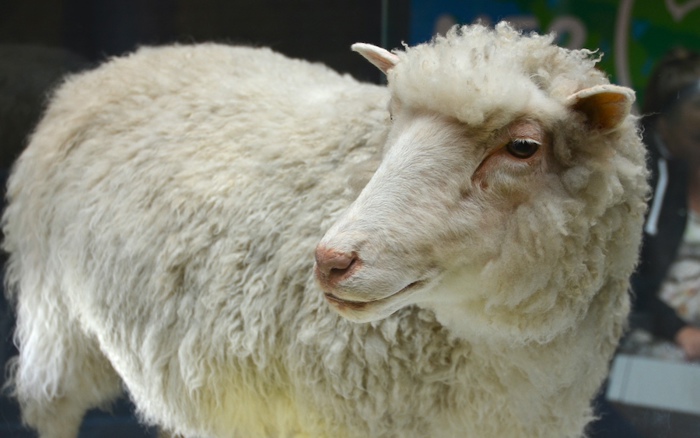
If we can clone a sheep, why not a dinosaur?
October 5, 2004

- Related Topics:
- Ancient DNA,
- Cloning,
- Futuristic science,
- Biotechnology
A curious adult from California asks:
"How is it that DNA can be extracted and read from long past fossils? Doesn't the drying and age affect the DNA? If we can clone a sheep from its DNA, why not a dinosaur?"
What fun questions. DNA is actually pretty stable for a biological molecule, particularly under conditions that are dry, cold and airless. DNA won't last forever, but it can last a long, long time.
However, it won't survive intact. What happens is that the ridiculously long strands of DNA break into smaller and smaller pieces over time. After an even longer time, the pieces begin to break more and more until eventually there is very little left.
To clone something with today's technology, we need all of its DNA intact. In fact, we not only need its DNA, but we also need the nucleus it came in.
As you probably know, most plant and animal DNA is found in the nucleus of a cell. Our current technology requires that we have an intact nucleus for cloning. Right now, the only way to get an intact nucleus is to start with an intact cell.
So to clone a dinosaur, we would need an intact dinosaur cell. Given how fragile a cell is, this is not something we're not going to find after 65 million years. In fact, even after a few million years, we aren't likely to find much except for very small amounts of tiny pieces of DNA without a cell or nucleus.

Until recently we couldn't do anything with this DNA because our techniques just weren't good enough. All that changed with the invention of PCR (polymerase chain reaction).
PCR lets you make lots of DNA from a very small amount. You can't make a whole chromosome, though, which is why we can't clone an animal using the technique. Instead of the millions of bases of DNA in a chromosome, we can only make pieces hundreds or thousands of bases long using PCR.
Even with PCR, we still can't even get any nuclear DNA from old samples! We are stuck with looking at mitochondrial DNA (mtDNA) because there is so much of it in each cell.
What's mtDNA? A small amount of DNA is found outside of the nucleus in the mitochondrion. The DNA found in the nucleus has two copies of each chromosome. Because there are thousands of mitochondria in each cell, there are thousands of copies of the mtDNA.
Scientists need the extra copies of mtDNA in each cell because they are right on the edge of being able to look at ancient DNA with current techniques. The two copies/cell of DNA in the nucleus is just too little at this point.
What scientists can do with mtDNA is compare it to other mitochondrial sequences and figure out who is related to whom. Not as interesting as cloning a T. rex, but still pretty cool.

For example, looking at Neanderthal DNA has shed some light on why they disappeared tens of thousands of years ago.
As you might know, Neanderthals were a very successful human species that disappeared about 30,000 years ago. Where'd they go?
There were two theories to explain what happened to them. In the first, Neanderthals just couldn't compete with the more clever humans and died out. In the second, humans and Neanderthals intermixed and the humans who are around today are a combination of the two.
When scientists looked at Neanderthal mtDNA, they found it was very different from any modern human mtDNA they had ever looked at. What this meant was that the Neanderthals probably died out and didn't interbreed with humans.*
As you can see, right now we can't even get any ancient DNA from the nucleus! While this means we can't clone a dinosaur, we can still learn a little bit about our evolutionary history from old DNA.
*Editor’s note (5/26/2021): At the time this article was published, it was believed that humans never interbred with Neanderthals. We now know that this is not the case — in fact, many humans alive today carry traces of Neanderthal DNA.

Author: Dr. Barry Starr
Barry served as The Tech Geneticist from 2002-2018. He founded Ask-a-Geneticist, answered thousands of questions submitted by people from all around the world, and oversaw and edited all articles published during his tenure. AAG is part of the Stanford at The Tech program, which brings Stanford scientists to The Tech to answer questions for this site, as well as to run science activities with visitors at The Tech Interactive in downtown San Jose.
 Skip Navigation
Skip Navigation
